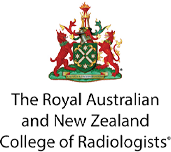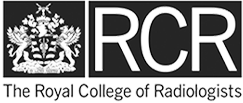Less invasive treatments are changing the face of how medical conditions get treated. Examples of these include varicose veins and uterine fibroids. For many patients, the thought of undergoing a surgical procedure can be daunting. This is why less invasive options have become a welcome alternative.
These new treatments bring effective results with faster recovery times. But are they safe? This article gives a comprehensive guide to these types of treatments. Read on to learn about what less invasive treatments bring you.
Endovenous Vein Treatment
Endovenous vein treatment addresses varicose veins through modern medical techniques. These are often performed in outpatient settings. In a capsule, these procedures target and seal off affected veins. They then redirect blood flow to healthier ones. By doing so, they reduce discomfort and improve the appearance of the patient’s legs.
What are Varicose Veins?
Varicose veins are veins that get twisted and enlarged. They bulge on a patient’s leg and oftentimes look bluish or purple. This happens as a result of weak valves, causing blood to pool. In most cases, they don’t hurt, but others may feel extreme discomfort because of them.
Endovenous Ablation
Endovenous ablation is a procedure that closes off varicose veins. This uses heat energy from laser sources or radiofrequency. The process starts by inserting a catheter into the affected vein. Then, the heat causes the walls to collapse and seal shut. This method is very effective and requires minimal recovery time.
Other Endovenous Techniques
Besides ablation, foam sclerotherapy and adhesive closure are also used. Foam sclerotherapy involves injecting foam into the vein to cause closure. Adhesive closure utilises medical-grade glue to close up the vein. Each one is unique based on individual patient needs.
Benefits of Endovenous Treatment
Endovenous vein treatment has several advantages. Listed here are some of the most common ones:
- Less Invasive. These procedures involve small incisions or injections. This is why there’s minimal use of anaesthesia, and there’s a reduced risk of complications.
- Rapid Recovery. The procedures aim to lessen the downtime of patients. In our experience, most patients return to normal activities within a few days.
- Cosmetic Appearance. The treatments enhance the appearance of the patient’s legs. This helps in boosting the confidence of most patients.
- Reduced Complications. These methods are safer, with a lower risk of infection and scarring. Post-operative pain is also lesser compared to traditional surgery.
Fibroid Embolisation
Fibroid embolisation is a non-surgical procedure that reduces uterine fibroids. It is the most ideal for women seeking hysterectomy or myomectomy alternatives.
What are Uterine Fibroids?
As the name suggests, these are benign growths near a woman’s uterus. They come in different sizes and bring symptoms such as heavy bleeding and pelvic pain. Other symptoms also include feeling pressure on the bladder or bowels. It’s not life-threatening, but it’s definitely a quality-of-life killer.
While fibroid embolisation involves accessing blood vessels, it is not classified as surgery. It’s less invasive than traditional surgery since it uses a tiny puncture to do the procedure.
Uterine Fibroid Embolisation (UFE)
What UFE does is choke out the growths mentioned above. This causes these growths to become smaller. Doctors do this by injecting small particles into the affected uterine arteries. This then results in lesser blood flow, which cuts the supply of oxygen and nutrients
Benefits of Fibroid Embolisation
The advantages of fibroid embolisation make it an attractive choice for women. Here are the main benefits:
- Preservation of the Uterus. Unlike hysterectomy, UFE allows women to keep their uterus. This helps them maintain reproductive capabilities and hormonal balance.
- Less Invasive. There are no large incisions in these procedures. This is why it has fewer risks and shorter recovery times compared to surgical options.
- Faster Recovery. Most patients resume daily activities within a week. This makes UFE a convenient option for those with busy schedules.
- High Success Rate. The majority of patients experience a reduction of fibroid symptoms after a UFE. Research shows that this enhances the quality of life of patients.
Choosing the Specialist for Endovenous Vein Treatment or Fibroid Embolisation
To gain the best outcome, choose the right expert who specialises in this procedure. Some factors for selecting these experts include:
Expertise and Experience
Seek an experienced professional who has performed such procedures several times. Experience makes it more likely to be successful with fewer chances of complications.
Reputation and Reviews
Looking into patient testimonials is a good way to check the track record of a specialist. This also gives you an insight into their patients’ level of satisfaction.
Consultation and Communication
A good specialist will educate the process, answer queries, and ease any doubts. Positive communication fosters trust and confidence in receiving their treatment.
Your Road To Better Health
Less invasive treatments are now more popular than ever. They can reduce your recovery time and lower the risk of complications. They also help improve your quality of life.
What’s key here is you must see the right specialist. You also need to take time to read and understand the procedure you’re getting. That way, you’ll know and recognise any potential risks. If you’re considering these treatments, talk to a trusted professional first. They can guide you and help you make the best choice for your health.
Get Checked Today!
Contact Lumina Health today at 0800 119 666 or email [email protected]
You can schedule a consultation and discuss the best path to your recovery.
Patient FAQs on Endovenous Vein Treatment and Fibroid Embolisation.
Many patients have questions before they decide on whether they’d get one. Read below the answers to some very common inquiries we get:
What are the Disadvantages of Fibroid Embolisation?
While UFE is effective, there are also a few potential minor disadvantages. These include post-procedure cramping, temporary fatigue, and, in rare cases, incomplete symptom relief. Discussing these risks with your specialist is essential.
What are the Disadvantages of Embolisation?
Embolisation procedures may pose risks such as infection and allergic reactions. However, these risks are uncommon when performed by experienced specialists.
What is the Cost of Fibroid Embolisation?
The cost of UFE will vary depending on the place, insurance coverage, and the medical facility. On average, this is more affordable than the surgical options. All while offering comparable and, sometimes, better results.








